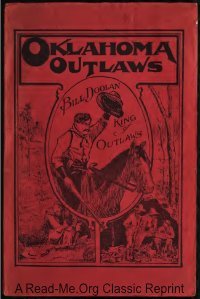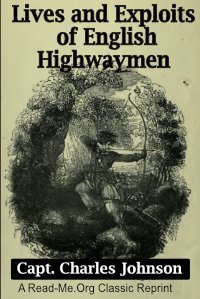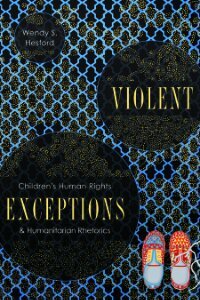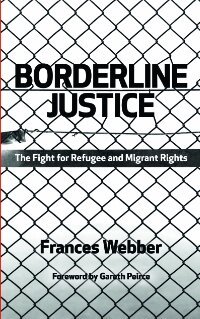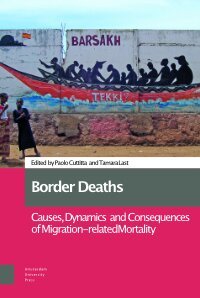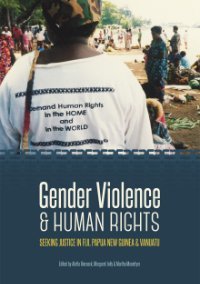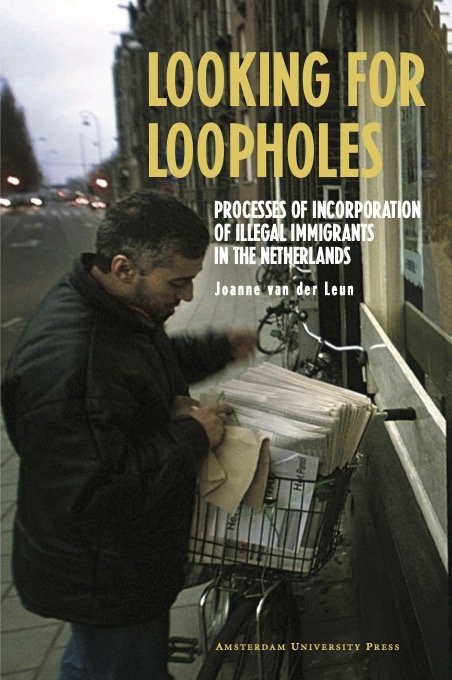By Joseph A. Dacus.
“In that dreadful ebullition of human hatreds, Frank and Jesse James played no laggard's part. As boys, they accepted service under Quantrell, and became renowned for caution and daring even in the days of their youth. Members of a partisan organization, famed even in the early days of the strife for daring deeds and extraordinary activity; a band, every man of which was a desperado of great cunning and prowess, these two callow-youths, taken from a country farm, speedily rose to the eminence of leading spirits among the most daring of men. Both sides in the border counties of Missouri and Kansas prosecuted war with a vindictive fury unparalleled in modern history. The scene of the operations of the Guerrillas was at first confined to the limits of Clay, Platte, Jackson, Bates, Henry, Johnson, and Lafayette counties, in Missouri, and along the Kansas border.”
St. Louis: W.S. Bruan; Chicago, J.S. Goodman, 1880. 396p.
by Charles MacFarlane.
The Lives and Exploits of Banditti and Robbers in All Parts of the World, Vol.1.. “Neither the fullness of years nor maturity of experience and worldly wisdom can render us as insensible to tales of terror such as fascinated our childhood, nor preserve us from a ‘creeping of the flesh’ as we read or listen to the narrative containing the daring exploits of some robber-chief, his wonderful address, his narrow escapes, and his prolonged crimes…”
London: T. Tegg and Son, 1837. 360p.
By W.S. Fortey.
A Most Notorious Highwayman. “Richard Turpin was born at Hampstead, in Essex, where his father kept the sign of the Bell; and after being the usual time at school, he was bound to apprentice to a butcher in Whitechapel, but did not serve out his time, for his master discharged him for impropriety of conduct, which was not in the least diminished by his parents' indulgence in supplying him with money, which enabled him to cut a figure round the town, among the blades of the road and the turf, whose company he usually kept.”
London: W.S. Fortey, 1860. 12p.
By Capt. Charles Johnson.
Pirates and Robbers, drawn from the most authentic sources, with additions by C. Whitehead. “He alone is a truly brave man, who, being powerful, for brave in it disgraceful to insult the feeble : many who pass the estimation of the world, are yet cowardly enough to commit base and barbarous actions : what else can be said of those, who possessing strength of mind and vigour of body, employ their faculties to rob and oppress the weak and ignorant ? It is an easy matter to assume the semblance of fortitude and resolution; but few, very few, are the individuals who really possess those noble qualities : particularly such hardened villains whose lives and exploits are so faithfully recorded in the following work.”
London Booksellers (1883) 452 pages.
By James Allen.
Alias Jonas Pierce.. The front cover of the famous skin-bound copy has a label which reads "HIC LIBER WALTONIS CUTE COMPACTUS EST" ("This book is bound in the skin of Walton"); Walton was one of the author's aliases. Some claim that books were bound in the skin of criminals. The narrative is a combination of autobiography and confession, transcribed by the warden, as the author himself was unable to write. It details Allen's life, beginning from childhood and laying out his struggles to find honest work as a teenager.[5] Allen explains how he moved from breaking into shops to highway robbery, and how he attempted to escape imprisonment many times. The book ends with a note from the warden, regarding Allen's state of mind toward the end of his life — Wikipedia.
Boston: Harrington & Co., 1837. 32p.
By Wendy S. Hesfor.
Violent Exceptions turns to the humanitarian figure of the child-in-peril in twenty-first-century political discourse to better understand how this figure is appropriated by political constituencies for purposes rarely to do with the needs of children at risk. Wendy S. Hesford shows how the figure of the child-in-peril is predicated on racial division, which, she argues, is central to both conservative and liberal logics, especially at times of crisis when politicians leverage humanitarian storytelling as a political weapon. Through iconic images and stories of child migrants, child refugees, undocumented children, child soldiers, and children who are victims of war, terrorism, and state violence, Violent Exceptions illustrates how humanitarian rhetoric turns public attention away from systemic violations against children’s human rights and reframes this violence as exceptional—erasing more gradual forms of violence and minimizing human rights potential to counteract these violations and the precarious conditions from which they arise.
Columbus, OH: Ohio State University Press, 2021. 282p.
Edited by Iris Berger, Tricia Hepner, Benjamin Lawrence, Joanna Tague, and Meredith Terretta.
Activism, Expert Testimony, and Refugee Rights. This book examines the emerging trend of requests for expert opinions in asylum hearings or refugee status determinations. This is the first book to explore the role of court-based expertise in relation to African asylum cases and the first to establish a rigorous analytical framework for interpreting the effects of this new reliance on expert testimony. Over the past two decades, courts in Western countries and beyond have begun demanding expert reports tailored to the experience of the individual claimant. As courts increasingly draw upon such testimony in their deliberations, expertise in matters of asylum and refugee status is emerging as an academic area with its own standards, protocols, and guidelines. This deeply thoughtful book explores these developments and their effects on both asylum seekers and the experts whose influence may determine their fate. Contributors: Iris Berger, Carol Bohmer, John Campbell, Katherine Luongo, E. Ann McDougall, Karen Musalo, Tricia Redeker Hepner, Amy Shuman, Joanna T. Tague, Meredith Terretta, and Charlotte WalkerSaid.
Athens, OH: Ohio University Press, 2015. 287p.
By African Child Policy Forum.
This publication is prepared both to advance our knowledge of the important but complex subject of child Justice in Africa and to inform the discussions at the 2nd Global Conference on Child Justice in Africa to be held in Addis Ababa in May 2018. This conference, organised by the African Child Policy forum (ACPF) and Defence for Children International (DCI) is a follow-up to the first such conference that took place in Kampala, Uganda, in November 2011. That conference resulted in the African Guidelines on Action for Children in Justice Systems in Africa which were endorsed by the African Committee of Experts on the Rights and Welfare of the Child at its March 2012 meeting. ACPF also published a continental study on children and justice systems in that year. The current study updates and extends that earlier study, seeking to examine the progress that has been made, and the challenges that remain, since the 2011 conference in achieving childfriendly justice in African justice systems. Given that children come in contact with justice system in different ways – through the formal and informal justice systems, in religious justice systems in some parts of the continent, and in both the criminal and civil justice systems – this study charts the continuum of experiences that children undergo in their contact with these systems.
Addis Ababa, Ethiopia" ACPF, 2018. 173p.
By Frances Webber.
The Fight for Refugee and Migrant Rights. Borderline Justice describes the exclusionary policies, inhumane decisions and obstacles to justice for refugees and migrants in the British legal system. Frances Webber, a long-standing legal practitioner, reveals how the law has been (mis)applied to migrants, refugees and other ‘unpopular minorities’. This book records some of the key legal struggles of the past thirty years which have sought to preserve values of universality in human rights - and the importance of continuing to fight for those values, inside and outside the courtroom. The themes and analysis cross boundaries of law, politics, sociology, criminology, refugee studies and terrorism studies, appealing to the radical tradition in all these disciplines.
London: Pluto Books, 2012. 257p.
Edited by Paolo Cuttitta, and Tamara Last.
Causes, Dynamics and Consequences of Migration-related Mortality. A 2018 report by two non-governmental organizations (NGOs) revealed that US Border Patrol agents ‘routinely intimidate, harass, and surveil humanitarian-aid volunteers, thus impeding the administration of humanitarian aid’ along the US-Mexico border. Furthermore, they ‘stab, stomp, kick, drain, and confiscate the bottles of water that humanitarian-aid volunteers leave along known migrant routes’ (La Coalición de Derechos Humanos and No More Deaths 2018). More broadly, through the criminalization of humanitarian assistance and the ‘weaponization’ of the terrain, US authorities make themselves responsible for the suffering, death and disappearance of many people (Morgan-Olsen 2018; Osuna 2018). On the other hand, Border Patrol agents often carry out rescue operations to save migrants, which – they argue – demonstrates ‘their dedication in protecting human life’ (U.S. Customs and Border Protection 2019). They are presented as true humanitarians (Price 2018). According to US President Donald Trump, the problem of border deaths can only be solved with more border control. ‘Border Patrol needs the Wall and it will all end’ was his comment on the death of two children occurred shortly after their crossing from Mexico (Tatum 2018)
Amsterdam: Amsterdam University Press, 2019. 175p.
By Barbara Roberts.
Until recently, immigration policy was largely in the hands of a small group of bureaucrats, who strove desperately to fend off “offensive” peoples. Barbara Roberts explores these government officials, showing how they not only kept the doors closed but also managed to find a way to get rid of some of those who managed to break through their carefully guarded barriers. Robert’s important book explores a dark history with an honest and objective style.
Ottawa: University of Ottawa Press, 1988. 264p.
Edited by: Aletta Biersack, Margaret Jolly, Martha Macintyre.T
The postcolonial states of Fiji, Papua New Guinea and Vanuatu operate today in a global arena in which human rights are widely accepted. As ratifiers of UN treaties such as the Convention on the Elimination of All Forms of Discrimination against Women and the Convention on the Rights of the Child, these Pacific Island countries have committed to promoting women’s and girls’ rights, including the right to a life free of violence. Yet local, national and regional gender values are not always consistent with the principles of gender equality and women’s rights that undergird these globalising conventions. This volume critically interrogates the relation between gender violence and human rights as these three countries and their communities and citizens engage with, appropriate, modify and at times resist human rights principles and their implications for gender violence. Grounded in extensive anthropological, historical and legal research, the volume should prove a crucial resource for the many scholars, policymakers and activists who are concerned about the urgent and ubiquitous problem of gender violence in the western Pacific.
Canberra: Australian National University Press, 2016. 398p.
By Harald Bauder.
International borders have become deadly barriers of a proportion rivaled only by war or natural disaster. Yet despite the damage created by borders, most people can’t – or don’t want to – imagine a world without them. What alternatives do we have to prevent the deadly results of contemporary borders? In today’s world, national citizenship determines a person’s ability to migrate across borders. Migration Borders Freedom questions that premise. Recognizing the magnitude of deaths occurring at contemporary borders worldwide, the book problematizes the concept of the border and develops arguments for open borders and a world without borders. It explores alternative possibilities, ranging from the practical to the utopian, that link migration with ideas of community, citizenship, and belonging. The author calls into question the conventional political imagination that assumes migration and citizenship to be responsibilities of nation states, rather than cities. While the book draws on the theoretical work of thinkers such as Ernst Bloch, David Harvey, and Henry Lefebvre, it also presents international empirical examples of policies and practices on migration and claims of belonging. In this way, the book equips the reader with the practical and conceptual tools for political action, activist practice, and scholarly engagement to achieve greater justice for people who are on the move.
Boca Raton, FL: CRC Press, 2016. 150p.
Edited by Hannah Jones, Yasmin Gunaratnam, Gargi Bhattacharyya, William Davies, Sukhwant Dhaliwal, Kirsten Forkert, Emma Jackson, and Roiyah Saltus.
In July 2013, the UK government arranged for a van to drive through parts of London carrying the message 'In the UK illegally? GO HOME or face arrest.' This book tells the story of what happened next. The vans were short-lived, but they were part of an ongoing trend in government-sponsored communication designed to demonstrate toughness on immigration. The authors set out to explore the effects of such performances: on policy, on public debate, on pro-migrant and anti-racist activism, and on the everyday lives of people in Britain. This book presents their findings, and provides insights into the practice of conducting research on such a charged and sensitive topic.
Manchester, UK: Manchester University Press, 2017. 204p.
By Joanne van der Leun.
Processes of Incorporation of Illegal Immigrants in the Netherlands. Governmental policies on irregular or illegal immigration are notorious for their ambiguities, as even a superficial glance at public discussions on the issue in the Netherlands can illustrate. Contentions that illegal or undocumented immigrants1 are not entitled to medical care alternate with messages that everybody who needs medical treatment of any kind should receive it. Representatives of municipalities openly back local initiatives to support illegal immigrants, while at the same time the national government emphasises that illegal immigrants are utterly responsible for themselves. Public assertions that there will be no regularisation schemes in the Netherlands are followed by a series of amnesties for semi-integrated ‘white illegals’. These few out of many examples illustrate that societal reactions to illegal immigration, and the presence of unauthorised immigrants are anything but clear-cut. Officially, the political aim is to put an end to the issue by implementing a sound and coherent ‘discouragement policy’ or ontmoedigingsbeleid. Comparable sets of policy measures are introduced all over the European Union, which is frequently depicted as ‘fortress Europe’. Yet in the meantime, the presence of illegal immigrants has become a common feature of many advanced states, including those that did not perceive themselves as countries of immigration for a long time.
Amsterdam: Amsterdam University Press, 2003. 231p.








